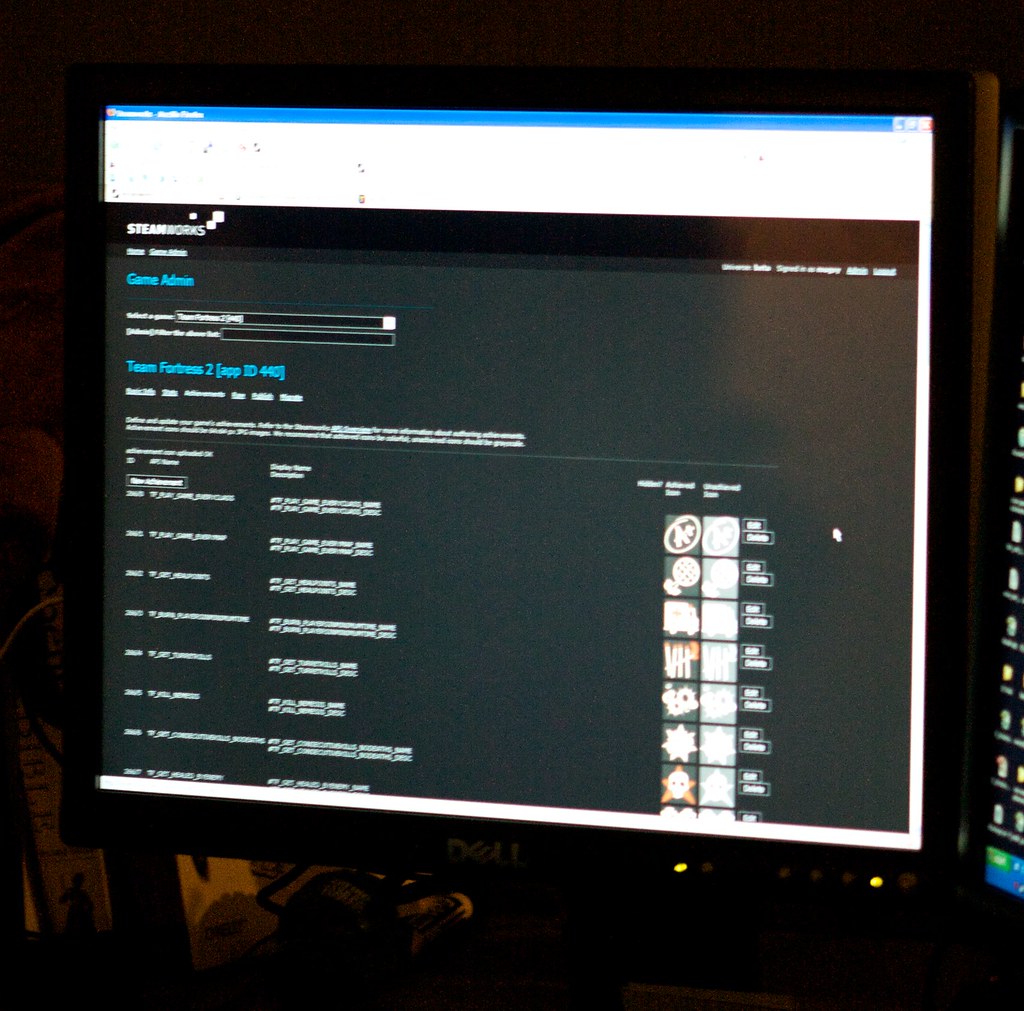
“games” by Sean MacEntee is licensed under CC BY 2.0
A differentiation strategy based on distinctive positioning improves a platform’s performance only when a platform system is a highly distinctive relative. (Cennamo, 2013) Steam is the largest PC gaming platform in the world. It has a highly user-active gaming community. What are its distinctive features, and what are the problems it has faced from the past to the present?

“Gabe Newell” by faseextra is licensed under CC BY-NC-SA 2.0
The shift from online game shop to the game community
The transformation of Steam from an original in-house gaming platform to a later open gaming platform and community of gamers. The first to take control of the Steam platform was Valve Software, an unlisted, privately-owned company controlled by founder Gabe Newell. Gabe Newell’s eleven-year early career at Microsoft just reinforced his understanding of computer software, especially games. In the early years of the 21st century, Valve released several games that were bundled with Steam downloads, and over time the number of users rose. The company also made the transition from being a gaming company to a self-produced gaming platform. Its game Half-Life created a double win in word-of-mouth sales. Steam also has a community model to help improve sales, and one of its strengths is the community area of Steam where users can vote on which games should be sold in the main digital shop. One of the most clicked was the anticipation of a third step sequel to Half-Life, which speaks volumes about the success of Valve’s production of the game. Today, more than one million copies of the game are sold on steam every day, and the myth is that there are 200 million Steam users.

“Gnome hl2 2007-10-15 00-32-54-55” by Pentadact is licensed under CC BY-SA 2.0
After Valve’s masterpieces, Half-Life has brought a huge user number and a higher audience base expectation. Its later games such as DOTA and CSGO also became phenomenal games. A direct consequence of the rapid sales growth and competition in this industry is that the publishers of content (known as publishers) are the most important. (Gil,2015) Fortunately, Valve, the company behind Steam, is both a game producer, publisher and platform provider. This is a unique advantage that allows Steam to move forward quickly. On top of this, the platform owners released sequels to these fine titles to the sole platform of Steam. The early years of anticipation of physical gaming allowed Steam’s online assets to expand rapidly, and with the advent of the digital age, Steam gradually tasted the dividends of innovation.
Profits in the community market
After a bumper crop of players and game sales, Steam started to use its huge volume to develop community modules. The launch of the Community Marketplace has not been the centrepiece of Steam since the very beginning, but it has enriched the usefulness of the platform and has increased the stickiness of users and met social needs. Communities can create a sense of identity, especially by facilitating the search for similar people. When users open the platform, they can clearly see the creative content created by their friends and even new custom game patches. In the development of the community’s modules, the only situation in which players get cash for their creations is when they make something for a Valve game and add it to the title as an official new feature. (BBC, 2015) This makes it possible to expand gameplay, and Steam’s community content shows the platform’s ambition in terms of consolidating user activity. Users can spend more time on the platform itself alongside their games, which increases their dependency on the platform.

“Steamworks” by Tim Dorr is licensed under CC BY-SA 2.0
Steam plays a role of a middleman, but also has a God’s perspective. Several studies have shown that embedding games in auction mechanisms can allow agents to use prices as a means of coordinating behaviour. The research suggests the existence of behavioural and institutional devices in-game markets through which agents appear to be able to coordinate behaviour. (Plott, 2000) The transaction fee reflects the difference made by the middleman and is limited to between 5% and 10% for second-hand accessories from different games.
Steam claims that the transaction fee is to prevent nominal incidents of fraud and to cover the development costs of Steam’s economic features.
An Exodus of game makers? The biggest crisis steam has ever faced
The entry of competitors and the loss of heavyweight games is the situation Steam is facing. Apart from money, its existence is selfish for its own player community modules.
Electronic Arts (EA) had launched its own Origin platform to replace Steam’s game sales. In 2011, EA chose to release their blockbuster Battlefield 3 on Origin, stating that they couldn’t stand Steam’s bullying terms (requiring game makers to release patches and updates through the Steam platform, and more importantly a whopping 30% sales draw) The diversity of patches had a boosting effect on their own gamer community’s game sharing board, Steam The diversity of patches has had a boosting effect on the content of its own gamer community, the Steam Workshop, which has made Steam even more demanding of manufacturers.
In recent years, Epic has become a rival to Steam that cannot be ignored. Epic has made a name for itself as the gaming platform of the Unreal Engine developer (the choice of most small developers) with Fortnite. Numerous gamers are optimistic about its future development and, surprisingly, Epic’s platform sales draw is only 15%, which gives Epic a lot of momentum. (REF) While the Metro series of games has long opted to be available on Steam, 2019’s new Metro game (Exodus) is appearing on the Epic shop and is exclusive for up to a year. Predictably Steam suffered from this.
It should be noted that at the Steam Game Developers Conference 2019, they specifically mentioned that 87.5% of Steam transactions in Asia use non-standard payment methods, including gift cards and country-specific payment methods (such as Alipay and WeChat in China), and that Steam bears the transaction costs of these third-party payment methods for developers. Pcgamesn believes this may be one of the reasons for its strong performance in Asia, as Epic has chosen to pass on these third-party transaction fees to consumers, and Steam is more friendly to Asian gamers. Later, as Chinese laws and continue to follow suit, it is conceivable that Epic’s growth potential is objective.

“Epic Games Berlin” by Sergey Galyonkin is licensed under CC BY-SA 2.0
“The way our competitor operates offshore is not legal in China, and they don’t have an office in China. We have employees there, so we are very sensitive to what is legal and what is not — more for the benefit and safety of our staff. We just don’t want to take any risks that can put them in any legal fire,” Epic Games Store boss Steve Allison.
Conclusion
Steam’s future business plans will be widely influential, and as a pioneer in a well-developed industry, its vision for the future will also influence the entire developer and player community. It is predictable that Steam will not be satisfied with just the current business model. They have created a complete sales mechanism, created a rational community and drawn in more valuable users. Then next, they are supposed to conduct more trials in the future and open a wider market. Furthermore, be prepared to face a more aggressive attack from rival platforms.
Reference List
BBC News. (2015, April 24). Valve expands video game “mod” market. Retrieved October 15, 2021, from BBC News website: https://www.bbc.com/news/technology-32449141
Steamworks Development. (2019). Steam Business Update / GDC 2019 [Video]. Retrieved from https://www.youtube.com/watch?v=wrvr02SiHY4
Stuart, K. (2014, December 17). Hatred game back on Steam Greenlight. The Guardian. Retrieved from https://www.theguardian.com/technology/2014/dec/17/hatred-game-back-on-steam-greenlight
Grubb, J. (2018, October 24). Steam is helping indies survive China’s new-game freeze. VentureBeat. Retrieved from https://venturebeat.com/2018/10/24/china-steam-gray-market/
Gil, R., & Warzynski, F. (2015). Vertical Integration, Exclusivity, and Game Sales Performance in the US Video Game Industry. Journal of Law, Economics, & Organization, 31, i143–i168. http://www.jstor.org/stable/43774640
Jones, A. (2019, May 15). With zero fanfare, the Epic Games store has released in China. PCGamesN. Retrieved from https://www.pcgamesn.com/epic-games-store-china
Valdes, G. (2019, March 26). Epic Games Store Q&A tackles China, Metro Exodus backlash, and mature games. VentureBeat. Retrieved from https://venturebeat.com/2019/03/25/epic-games-store-qa-tackles-china-metro-exodus-backlash-and-mature-games/